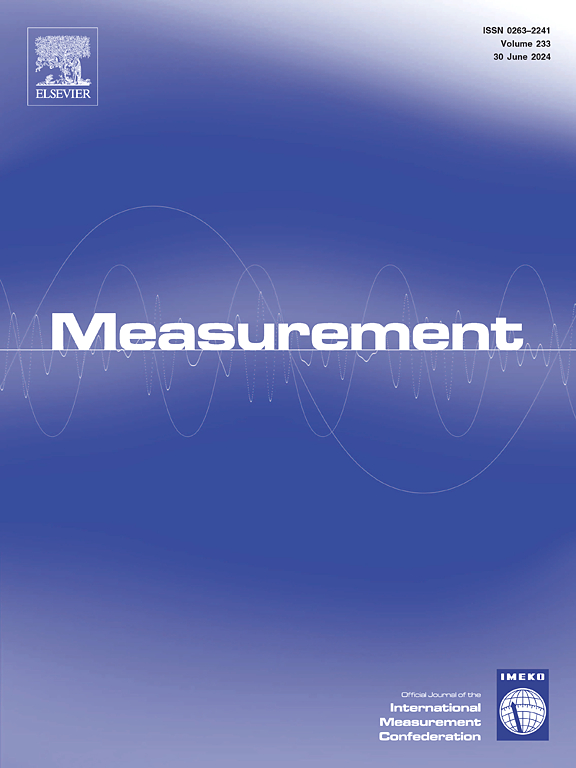Real-time weight estimation of Zucchini using laser-based 3D matrix and deep learning
IF 5.6
2区 工程技术
Q1 ENGINEERING, MULTIDISCIPLINARY
引用次数: 0
Abstract
Accurate and efficient weight-based grading systems are essential for maintaining quality standards and improving productivity in modern agriculture. However, traditional methods are often manual, time-consuming, and prone to inaccuracies. This study presents a machine vision-based system for automated Zucchini weight estimation using a cost-effective laser-assisted 3D imaging method combined with deep learning. A red line laser, aligned perpendicular to a moving conveyor, captures video frames of Zucchinis. Height deviations from the laser profile are analyzed to generate a 3D matrix for each Zucchini. These data are resized, augmented, and used via transfer learning as inputs for pre-trained deep learning models, VGG16, ResNet101, and MobileNetV2. The study also compares this laser-based volumetric approach with traditional RGB image-based estimation. Among the models, MobileNetV2 using 3D matrix input achieved the highest accuracy, with an R2 of 0.96 ± 0.03, root mean squared error of 19.01 ± 6.29 g, and mean absolute percentage error of 7.04 ± 2.63 %. The 3D matrix-based approach significantly outperformed the image-only method in accuracy and processing speed. Nevertheless, limitations such as sensitivity to ambient light, surface moisture, and the need for controlled imaging conditions must be considered for real-world deployment. This research introduces a scalable, low-cost solution for real-time weight grading of Zucchinis, with the potential for adaptation to other irregularly shaped horticultural crops. Furthermore, the system architecture can be extended to assess other practical applications of postharvest traits, such as ripeness, surface damage, or frostbite. Future work will focus on validating the system across diverse environmental conditions and expanding its functionality for broader use in precision agriculture.
基于激光三维矩阵和深度学习的西葫芦实时权重估计
准确和有效的基于权重的分级系统对于保持现代农业的质量标准和提高生产力至关重要。然而,传统的方法通常是手工的,耗时的,而且容易出错。本研究提出了一种基于机器视觉的西葫芦重量自动估计系统,该系统使用具有成本效益的激光辅助3D成像方法结合深度学习。一条与移动的传送带垂直排列的红线激光捕捉到了西葫芦的视频帧。分析激光轮廓的高度偏差,生成每个西葫芦的三维矩阵。这些数据被调整大小、增强,并通过迁移学习作为预训练深度学习模型、VGG16、ResNet101和MobileNetV2的输入。研究还将这种基于激光的体积测量方法与传统的基于RGB图像的估计方法进行了比较。其中,使用3D矩阵输入的MobileNetV2模型精度最高,R2为0.96±0.03,均方根误差为19.01±6.29 g,平均绝对百分比误差为7.04±2.63%。基于三维矩阵的方法在精度和处理速度上明显优于纯图像方法。然而,在实际部署中,必须考虑诸如对环境光的灵敏度、表面湿度以及对受控成像条件的需求等限制。本研究介绍了一种可扩展的、低成本的解决方案,用于西葫芦的实时重量分级,具有适应其他不规则形状园艺作物的潜力。此外,系统架构可以扩展到评估采后特征的其他实际应用,如成熟度、表面损伤或冻伤。未来的工作将侧重于在不同的环境条件下验证该系统,并扩展其功能,以便在精准农业中得到更广泛的应用。
本文章由计算机程序翻译,如有差异,请以英文原文为准。
求助全文
约1分钟内获得全文
求助全文
来源期刊

Measurement
工程技术-工程:综合
CiteScore
10.20
自引率
12.50%
发文量
1589
审稿时长
12.1 months
期刊介绍:
Contributions are invited on novel achievements in all fields of measurement and instrumentation science and technology. Authors are encouraged to submit novel material, whose ultimate goal is an advancement in the state of the art of: measurement and metrology fundamentals, sensors, measurement instruments, measurement and estimation techniques, measurement data processing and fusion algorithms, evaluation procedures and methodologies for plants and industrial processes, performance analysis of systems, processes and algorithms, mathematical models for measurement-oriented purposes, distributed measurement systems in a connected world.
 求助内容:
求助内容: 应助结果提醒方式:
应助结果提醒方式:


